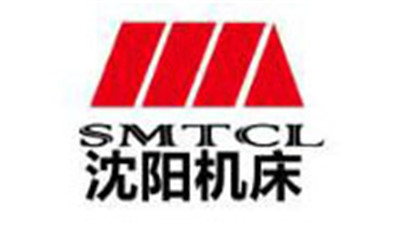Understanding the Role of Switching Transformers in Modern Power Electronics
Table of Contents
- The Importance of Switching Transformers in Efficient Power Conversion Systems
- Key Specifications of Switching Transformers for High-Frequency Applications
- Trends in the Market: Growth of Power Electronics Utilizing Switching Transformers
- Impact of Switching Transformers on Renewable Energy Integration and Management
- Technological Advances in Switching Transformers Enhancing Electric Vehicle Performance
- Challenges and Innovations in Thermal Management for Switching Transformers in Modern Designs
- Exploring the Efficiency and Reliability of Encapsulated Transformers with Terminals: Insights from Industry Reports and Market Trends
- FAQS
- Conclusion
- Related Posts
You know, in today’s fast-changing world of power electronics, Switching Transformers are really becoming a big deal. I recently came across a report from Markets and Markets that predicts the industry’s gonna hit around $47.2 billion by 2026. A lot of that growth is thanks to the surge in consumer gadgets and renewable energy setups—stuff we see everywhere now. These Switching Transformers are pretty much the backbone when it comes to making sure energy is efficiently converted and voltages stay steady—crucial for keeping our electronics running smoothly.

Oh, and by the way, Dezhou Xinping Electronics Co., Ltd.—they’re a high-tech company founded back in 2001—really showcase how advanced manufacturing in this field has become. They focus on crafting precision electronic transformers that work across all sorts of applications. Looks like as the world pushes more toward energy efficiency and sustainability, keeping innovating with these Transformers is gonna be key for the future of power electronics, no doubt about it.
The Importance of Switching Transformers in Efficient Power Conversion Systems
You know, in today's world of power electronics, switching transformers are pretty much essential for making sure everything runs smoothly and efficiently. They’re the behind-the-scenes heroes that help transfer energy reliably between different voltage levels — crucial whether you're dealing with your everyday gadgets or heavy-duty industrial machines. Plus, with all the cool new materials and designs out there, these transformers can actually cut down on energy losses, boost system performance, and even help reduce our carbon footprint when we’re converting power.
When it comes to picking the right switching transformer, there are a couple of things to keep in mind. For starters, think about the operating frequency and the load you'll be handling. It’s best to go for a transformer that fits your needs — not too small, not too big — so you don’t end up wasting energy. Also, pay attention to the core material. For high-frequency stuff, ferrite cores are usually a good bet, but if you’re working with lower frequencies, other materials might do the trick better.
And let’s not forget about heat. Understanding how the transformer handles thermal stress is super important because overheating can really shorten its lifespan. Make sure your setup includes proper cooling solutions, and keep an eye on those temperatures during operation. If you keep these things in mind, you’ll see a big difference in how reliable and efficient your power systems are — they’ll work better and last longer, no doubt!
Understanding the Role of Switching Transformers in Modern Power Electronics - The Importance of Switching Transformers in Efficient Power Conversion Systems
| Parameter | Value | Unit |
|---|---|---|
| Input Voltage Range | 90 - 265 | V |
| Output Voltage | 12 | V |
| Max Output Current | 5 | A |
| Efficiency | 85 | % |
| Operating Frequency | 100 | kHz |
| Weight | 300 | g |
| Size (L x W x H) | 90 x 60 x 30 | mm |
Key Specifications of Switching Transformers for High-Frequency Applications
Switching transformers are pretty crucial in modern power electronics, especially when it comes to high-frequency stuff like power supplies and energy conversion systems. One of the main things you really want to keep an eye on is the frequency response. This basically tells you how well the transformer can handle working efficiently at those higher switching speeds. Usually, these transformers are designed to keep losses to a minimum, even when dealing with rapid voltage changes. That way, they can perform smoothly and respond quickly when needed.
Another important factor is the insulation system. It’s what keeps everything safe when operating at higher voltages. In high-frequency applications, you need insulation materials that can take the heat and electrical stress without faltering. Plus, choosing the right core material matters a lot because it affects magnetic performance and overall efficiency. Ferrite cores are pretty popular here—they have low losses and good inductive qualities, which makes them great for compact designs. That’s a big deal in today’s electronics. All in all, understanding these specs is key for engineers and designers who want to get the most out of switching transformers in different electronic setups.

Trends in the Market: Growth of Power Electronics Utilizing Switching Transformers
Hey, have you noticed how the power electronics scene is really booming lately? It’s pretty exciting, especially with the growing buzz around advanced switching transformers. From what I’ve been reading, the global market for semiconductor rectifiers is expected to grow quite a bit. Silicon and silicon carbide (SiC) are pretty much leading the charge these days, thanks to their efficiency and ability to handle high temperatures. And there’s also a lot of chatter about Gallium Nitride (GaN) rectifiers — folks are really attracted to their quick switching and energy-saving qualities.
As industries push to modernize their electrical setups, companies like Dezhou Xinping Electronics Co., Ltd. are really in a good spot to thrive. They've been around since 2001 and have made a name for themselves in the field of precision electronic transformers. With the rising demand for high-voltage switchgear and other related tech, it looks like the market’s only getting hotter, especially with new innovations like real-time monitoring and automated maintenance tools making everything more efficient.
Just a quick tip — when you’re picking out a rectifier for power-related projects, make sure to pay attention to the voltage ratings and the type of rectifier you're going with. It’s also smart to keep tabs on market trends, especially the shift toward SiC and GaN tech — those are definitely shaping the future and might be worth considering if you want your setup to stay ahead of the curve.
Impact of Switching Transformers on Renewable Energy Integration and Management
Switching transformers are super important when it comes to integrating and managing renewable energy sources in today’s power systems. As the energy scene shifts more and more towards wind, solar, and other alternative options, having efficient power conversion tools becomes even more critical. These transformers help by turning the variable voltages from renewables into steady, reliable power that can feed into the grid or be used locally. That’s key, because renewable energy is often pretty unpredictable and varies a lot.
On top of that, switching transformers do a lot to keep the grid stable and running smoothly. They support things like fixing power factor and adjusting voltage levels — which are definitely needed since renewable energy production can fluctuate quite a bit. Plus, with smart grid tech becoming more common, these transformers are also helping with real-time monitoring and control. That means better load balancing and smarter distribution of energy overall. All in all, they not only boost how well renewable systems perform but also help build a more reliable and resilient energy infrastructure that we can count on.
Impact of Switching Transformers on Renewable Energy Integration
Technological Advances in Switching Transformers Enhancing Electric Vehicle Performance
You know, the rapid progress in switching transformer tech has really pushed electric vehicles (EVs) to perform better than ever—more efficient and way more sustainable. The main thing driving this change is how modern switching transformers can handle and convert power so efficiently. This isn’t just about better energy use; it also helps cut down on losses during power conversion, which means your EV can go further on the same amount of charge. Plus, with newer materials like wide bandgap semiconductors, these transformers can run at higher frequencies. That’s a big deal because it makes them lighter and smaller, helping reduce the overall weight of the vehicle.

But it’s not just about size and efficiency. Switching transformers are also key for adding fancy new features in EVs. Thanks to improved control algorithms built into these systems, managing the flow of power gets way more precise. That translates into quicker response times and better overall performance—especially super high-performance EVs that need to accelerate fast and handle dynamic power demands. As more people jump into electric mobility, these technological upgrades with switching transformers will be crucial to making future EVs even more efficient, reliable, and just a pleasure to drive.
Challenges and Innovations in Thermal Management for Switching Transformers in Modern Designs
When it comes to switching transformers, managing heat is a pretty big deal. It’s crucial for keeping things running smoothly and reliably in modern power electronics. As devices get smaller and performance expectations rise, these transformers end up dealing with more heat stress — it’s like their heat just keeps increasing! That’s why new and smarter cooling solutions are so important — nobody wants these things to overheat and break down early, right? Using better materials and designing heat sinks that do their job well are key to keeping the temperature just right.
And here's the thing: active thermal management systems are really becoming a game changer. These systems can actually respond on the fly to temperature changes, thanks to sensors that keep an eye on heat levels. Then, smart algorithms adjust the cooling stuff as needed — pretty neat! Plus, advances in things like computational fluid dynamics and thermal modeling help us design more efficient cooling setups. As power electronics keep evolving, tackling these heating issues is going to be super important for building reliable, high-performance transformers for the future — it’s all about making sure they don’t overheat and keep doing their thing without a hitch.
Exploring the Efficiency and Reliability of Encapsulated Transformers with Terminals: Insights from Industry Reports and Market Trends
In the ever-evolving landscape of electrical components, encapsulated transformers with terminals have gained significant attention for their efficiency and reliability. Recent industry reports highlight their crucial role in enhancing the performance of various applications, from renewable energy systems to advanced consumer electronics. These transformers are designed to withstand harsh conditions while ensuring optimal electrical insulation, which is vital for maintaining system integrity and longevity.
Our encapsulated transformers are a testament to this innovation, featuring a potting product with customizable terminals tailored to meet specific customer requirements. The ability to modify shell color and parameters ensures that our transformers not only fit seamlessly into existing designs but also enhance the overall aesthetic appeal of the end product. This customization capability, coupled with robust manufacturing processes, allows us to deliver solutions that align with market trends and meet the diverse needs of various industries.
As organizations increasingly prioritize efficiency and reliability in their electrical components, adopting encapsulated transformers represents a strategic investment. With our commitment to quality and customization, we stand ready to support clients in exploring how our products can elevate their projects, ensuring they remain competitive in the marketplace. To learn more about our offerings and how they can benefit your operations, please contact us for detailed specifications and options.
FAQS
: Switching transformers are crucial in high-frequency applications as they allow efficient operation at high switching frequencies while maintaining minimal losses and effectively handling rapid voltage changes.
Frequency response is vital because it determines the transformer's ability to operate efficiently at higher switching frequencies, which is essential for applications requiring quick response times.
Ferrite cores are commonly used due to their low losses and excellent inductive properties, making them suitable for compact designs in modern electronic devices.
Switching transformers facilitate the conversion of variable voltage levels generated by renewable energy sources into stable outputs, addressing the intermittency and variability associated with renewables.
They enable advanced functionalities such as power factor correction and voltage regulation, which are essential for managing the fluctuations in renewable energy generation.
Switching transformers contribute to smart grid technology by enabling real-time monitoring and control, allowing for improved load balancing and energy distribution.
The insulation system is critical as it ensures safe operation at elevated voltages, requiring robust materials to withstand thermal and electrical stresses during high-frequency operations.
Understanding these specifications is vital for engineers and designers to optimize the performance of switching transformers in various electronic applications, particularly in power conversion systems.
Conclusion
Switching transformers play a pretty vital role in today’s power electronics. They’re key for making sure power conversion systems run smoothly and efficiently—something that’s super important across a bunch of different applications. When it comes to high-frequency uses, their specifications really need to be spot-on to handle the tough demands of modern tech. As the market for power electronics keeps expanding—especially with all the buzz around renewable energy and electric vehicles—the importance of these transformers just keeps growing.
Out here in Dezhou, Xinping Electronics Co., Ltd., a high-tech company that’s been around since 2001, is making strides in this space by producing precision electronic transformers. It’s pretty cool how switching transformers are central to integrating renewable energy sources, and dealing with issues like thermal management in new designs is a big part of pushing performance and reliability forward. Grasping these trends really helps us get the most out of switching transformers in creating energy-efficient solutions, right?
Related Posts
-

7 Essential Tips for Choosing the Right Step Up and Step Down Transformer
-

How to Choose the Right Dry Transformer for Your Industrial Needs
-

Understanding the Challenges Faced with Converter Transformers in Industrial Applications
-

How to Choose the Right Substation Transformer for Your Energy Needs Based on Load Calculation
-

How to Select the Best Voltage Regulator Transformer for Your Needs
-

How to Choose the Right Matching Transformer for Your Application
Blog Tags:


















